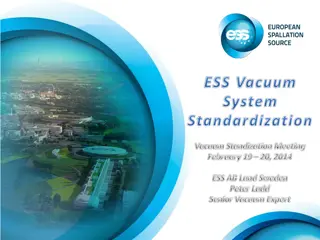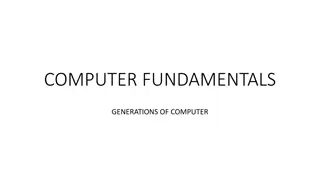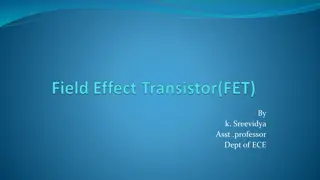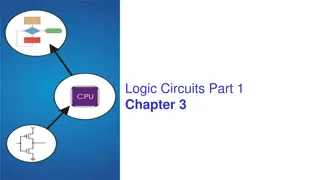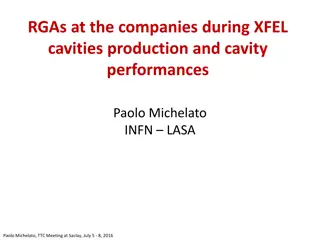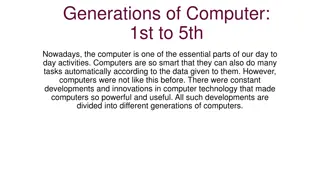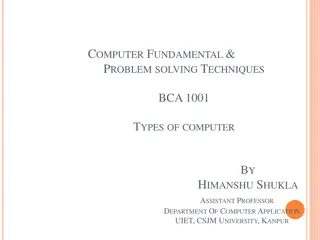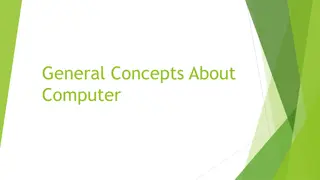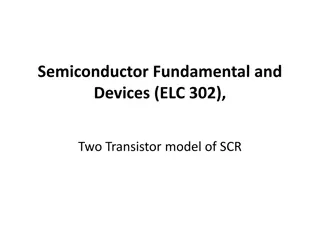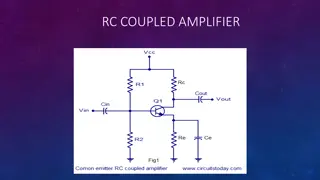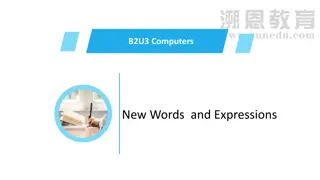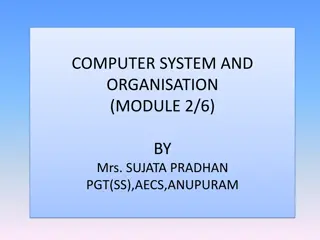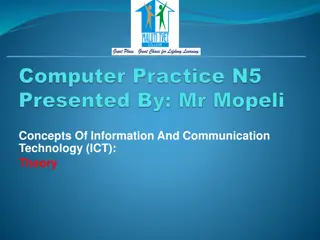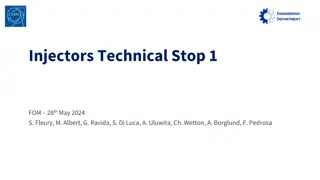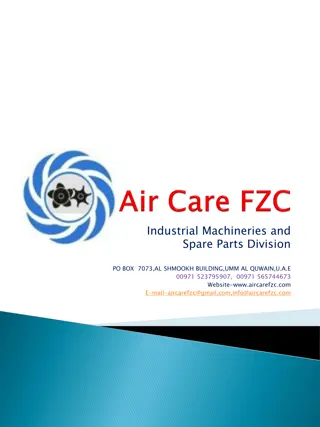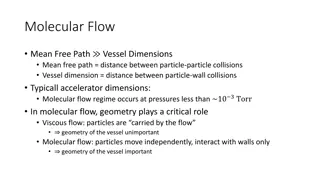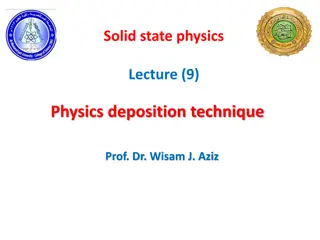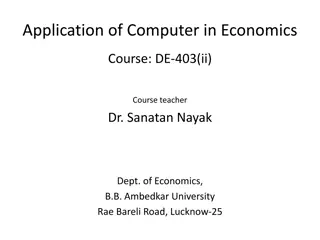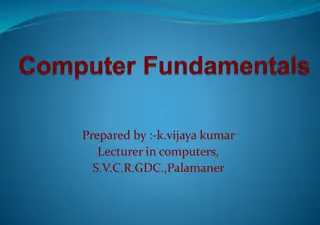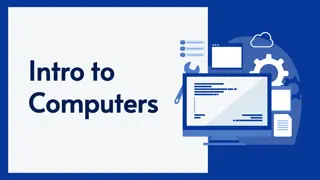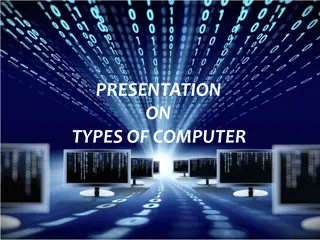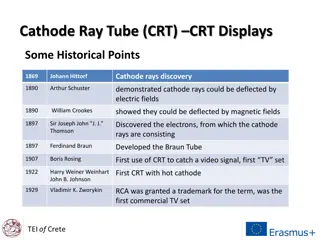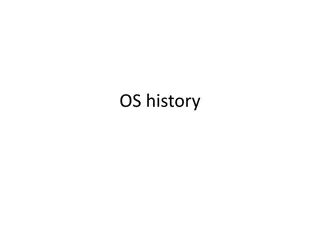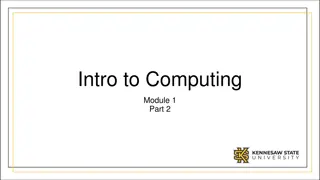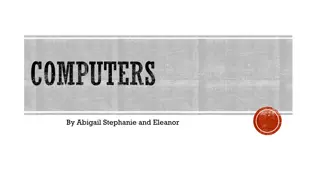Evolution of Computers: From Vacuum Tubes to Transistors
The evolution of computers has seen remarkable progress from the era of vacuum tube machines to the introduction of transistors. Starting from massive devices to compact and powerful systems, computers have become an indispensable part of modern life. Explore the generations of computers, their functions, advantages, and the impact of this technological advancement on society.
Download Presentation

Please find below an Image/Link to download the presentation.
The content on the website is provided AS IS for your information and personal use only. It may not be sold, licensed, or shared on other websites without obtaining consent from the author. Download presentation by click this link. If you encounter any issues during the download, it is possible that the publisher has removed the file from their server.
E N D
Presentation Transcript
SeminarPpt.com Seminar On Computer Submitted to: Seminarppt.com Submitted By Seminarppt.com
Table of Content Introduction Definition Evolution Generation of Computer Types of Computer Functions Advantages And Disadvantages of Computer Conclusion 2
Introduction There are two main aspects of the computer: Input: The data we enter into the computer is called the input. Input, basically are raw facts for which we want the system to process and give us an outcome Output: The answer that the computer provides in return of the raw data entered, is called output 3
Definition An electronic device that accepts data and processes it into useful information is called a Computer. 4
Evolution of Computer The computer started as a huge electronic device which took a large area for its instalment, and the mechanism was very complication. Still, then with time, those huge machines were converted into smaller versions of the divide, starting with the monitors, then laptop and later on the invention of tablets. 6
Evolution of Computer The first fully electronic computer was introduced in the 1930s, and since then, the development of computer and its related devices has been unstoppable. Computers are nothing but an advanced version of Abacus, which dates back to almost 5000 years. 7
Generations of Computer First Generation (Vacuum Tubes) 1940-1956: This Generation computers relied on Machine Language (the Language of 0s and 1s) and used Vacuum tubes as components of memory. They were huge in size and occupied almost a room-size area to fit in. 8
Generations of Computer Second Generation (Transistors) 1956-1963: The first-ever transistor was invented in 1947 but could never be used in the computer until the 1950s. The speed of the transistor decided the speed of the computer It was less expensive in comparison to the 1st Generation computers. 9
Generations of Computer Third Generation (Integrated Circuits) 1964- 1971: The phase when the usage of keyboards and monitors ha started for the input and output. The transistors had been reduced in size and were placed on silicon chips. This increased the speed of the computer. 10
Generations of Computer Fourth Generation (Microprocessors) 1972- 2010: The maximum developments were done during this time phase as technology has advanced many folds. By this time, millions of transistors could be placed on the silicon circuits. 11
Generations of Computer Fifth Generation (Artificial Intelligence) 2010- till date: The current generation of computers which have made our lives easier and more convenient is all a part of the fifth generation of the computer. 12
Types of Computer Super Computer The computers which are used to process a huge amount of data at once are called Supercomputers. They are mostly used in scientific and engineering operations where the processing is complex. They are expensive and complicated to work. For example The computers used by NASA to launch space shuttles. 13
Types of Computer Mainframe Computer Computers designed to be used in large firms and organisations where a lot of people have to work on the same database are called mainframe computers. They are almost equally as expensive as Supercomputers and are the fastest working computers at present. They are mostly used in Banks. 14
Types of Computer Workstation Usually a single user system is called a work station. The RAM for such systems is more, and the processors are quite fast. They are mostly used by an individual and can be used for multiple purposes. 15
Types of Computer Microcomputer Designed for personal use only. This type of computers can easily be moved from one place to the other. They have a personal storage area, input & output unit and a Central Processing Unit. Examples for microcomputer are desktop, laptop, mobile phone, tablets, etc. 16
Functions of Computer Lengthy calculations which may take hours to be completed manually can now be done within seconds Easy to use and cost-effective. People can buy them at reasonable prices Reduced manual labour 17
Functions of Computer Made storing information easier and more convenient Years of data can be saved in the form of data in computers without the fear of losing it There can be no question over its accuracy if the input has been given correctly 18
Conclusion A computer is a device that accepts information (in the form of digitalized data) and manipulates it for some result based on a program, software, or sequence of instructions on how the data is to be processed. 20
References Wikipedia.org Google.com Seminarppt.com Studymafia.org


